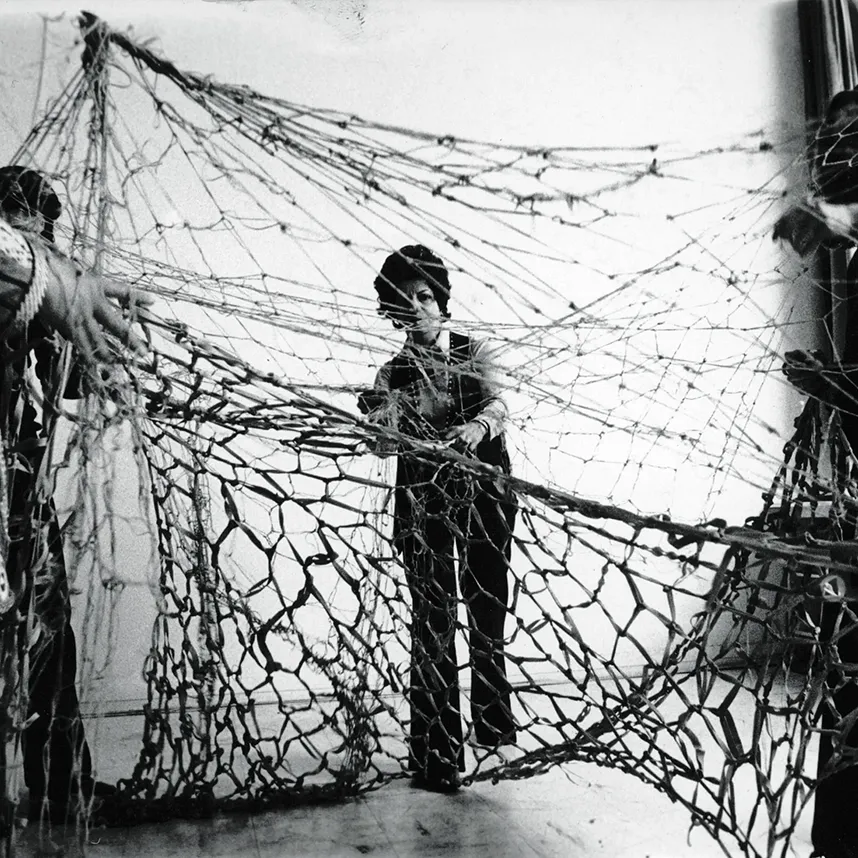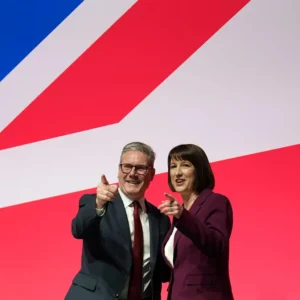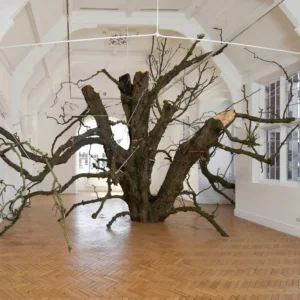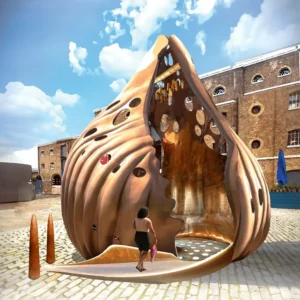Lygia Clark: The I and the You and Sonia Boyce: An Awkward Relation at the Whitechapel Gallery embrace the ethos of collective engagement by exploring how participatory art transforms the relationship between artist, audience, and artwork.
This bold curatorial pairing highlights shared themes of touch and play while bridging two distinct cultural and historical contexts. The exhibitions create a dialogue between transnational art practices and histories, emphasizing art’s relational and therapeutic possibilities.
Clark, a key figure in Brazil’s Neo-Concrete movement, and Boyce, a leading voice in Britain’s Black Arts Movement, both moved from object-based art to participatory practices. Clark’s first UK museum survey, The I and the You, spans her career from geometric abstractions and Bichos (Critters), foldable metal sculptures, through her tactile, multisensory experiments of the 1960s and 70s.
Visitors can handle replicas of Clark’s Bichos, compress air-filled objects that mimic lungs, or wear interactive rubber suits from O eu e o tu (The I and the You, 1967). Performers also periodically reactivate works like Corpo Coletivo (1970), where participants in sewn-together jumpsuits explore shared movements, and Elastic Net (1974), inviting playful interaction with a sprawling elastic structure.
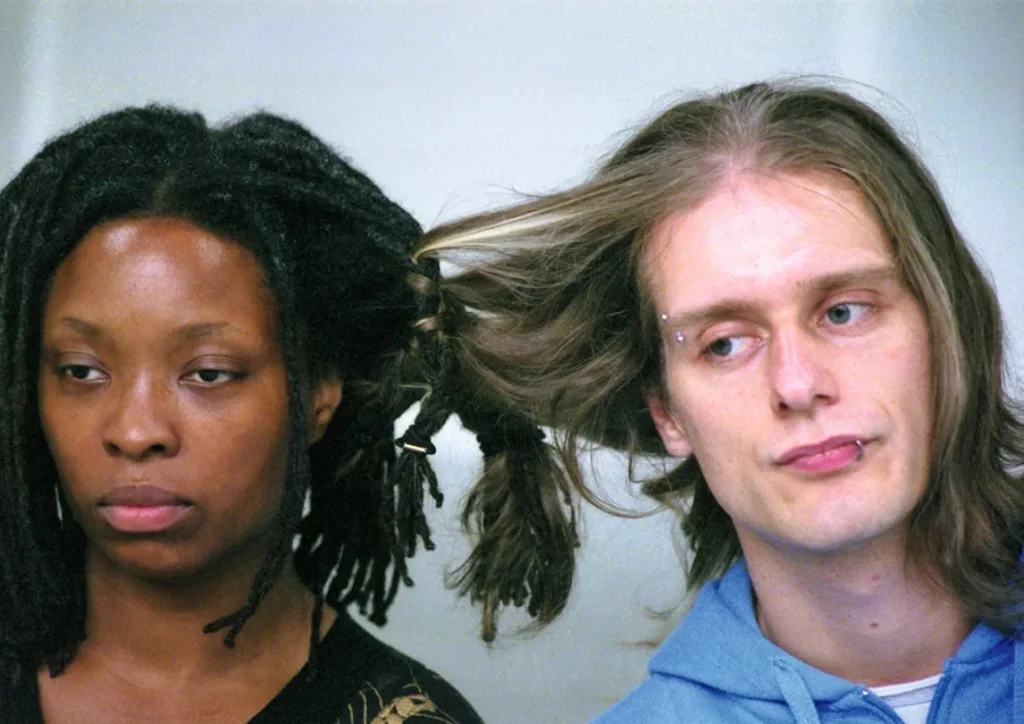
Boyce’s exhibition, An Awkward Relation, eschews her early figurative works addressing race and gender to focus on her later collaborative, improvisational practice. Highlights include her 1993 installation Hair Objects, which invites tactile engagement with synthetic dreadlocks and braids, and We Move in Her Way (2017), a multimedia installation documenting a live performance where dancers and audience members co-created a dynamic environment.
Boyce’s kaleidoscopic wallpapers, derived from abstracted imagery of hair, hands, and performers, create immersive, sensory-rich settings that echo Clark’s tactile approach while challenging traditional display conventions.
The exhibitions reveal a shared interest in dissolving boundaries between artist and audience, artwork and participant, and self and other. Boyce’s braided hair sculptures and her video Exquisite Tension (2006) parallel Clark’s Diálogo de Mãos (1968) and collective experiments like Corpo Coletivo. However, Boyce focuses on institutional settings, using play and collaboration to critique cultural hierarchies, while Clark’s later work embraced therapeutic practices beyond conventional art spaces.
By uniting two distinct yet complementary artists, Whitechapel Gallery reaffirms its commitment to fostering diverse, cross-cultural dialogues, inviting audiences to touch, play, and connect.

